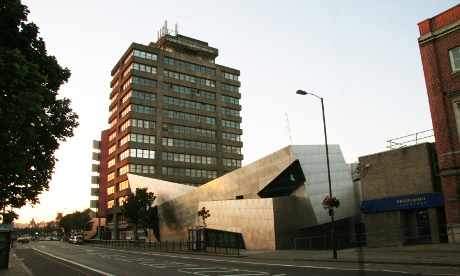East End universities come bottom of league tables
One option for students trying to reduce the cost of getting a university education is to pick a local college and live at home, just as you might try to save on a holiday by taking it in the UK. Like a staycation, but for learning.
You might not get the full ‘university experience’ living with your mum and dad, but a bigger problem with picking somewhere close to home is the way it narrows your academic options. Rather than picking from universities across the country, you’re left with what’s in reach of your postcode.
This could be a particular problem for students in east London, where two large universities – the University of East London (UEL) and London Metropolitan (Met) – have been placed at the bottom of the Times newspaper’s Good Universities Guide 2014, in 120th and 121st place respectively.
The Times guide grades universities across a number of criteria: the number of first-class and 2:1’s students achieve; the quality of research the university conducts; the ratio of staff to students; the results of student satisfaction surveys; the likelihood that students will complete their degree and their chances of finding a job once they do.
Tables misleading
Such judgements of university performance were criticised recently by the former Universities Minister David Willets, who said in July that he didn’t think listings such as the Times’ told “the whole truth”.
“What they don’t measure is the hard work, talent, professionalism, contacts and ability of the teaching staff at access universities like London Met,” he said (during a speech at London Met). “They don’t measure the ability of these universities to change lives.
“Many of the students at access universities are the first in their families to enter Higher Education, but league tables do not convey the importance of this,” he went on. “They don’t capture the transformational quality of universities such as London Met, which changes lives every day.”
In a sense, the tables go out of their way not to capture this quality. You actually lose marks for accepting students with poor A-level results.
The Times table takes into account the number of UCAS points required to enter a university. London Met, for instance, requires on average 229 UCAS points for a student to enrol: such a score can be achieved with three D’s at A-Level (worth 90 points each), or with a clutch of decent BTECs. The same goes for UEL’s average entry requirement of 238 points. Cambridge (at the top of the table) asks for 610 points; the University of the West of England (midway at place 60), asks for 322.
Having a lower entry ‘tariff’ gets you a lower place in the table.
There’s clearly a question of cause vs. effect here: high-achieving students will shop around, and if they’re avoiding a given institution that’s an indication that that institution needs to improve – and it will be forced to take on students with less success in exams. On the other hand, starting from a lower point makes small gains more impressive.
Access Universities
And both UEL and London Met say they deliberately take on students with low academic scores in order to broaden the reach of higher education. This is what makes them ‘access universities’.
“London Met is an access university, and we are very proud of that,” a spokesman for London Met said.
“University should be available to people from all walks of life. But this means our entry levels can have a negative effect on our league table rankings.
“Our students tell us that they enjoy their time at London Met, and they go on to achieve success in their chosen areas.”
London Met acknowledge they aren’t perfect, and will be launching a major new “investment programme” next year.
Dusty Amroliwala, Deputy Vice Chancellor at UEL, said “at UEL we actively encourage people from a range of diverse backgrounds to enter university life.
“We’re particularly proud of this and are building on our reputation for diversity and widening participation with latest figures showing that more than 98 percent are from state schools and colleges.
“We’re also leading the way when it comes to promoting civic engagement, which ensures that our students are actively helping to shape and change the lives of local, national and international communities.”
Universities hold a lot of power in our education system. Their entrance requirements determine the priorities of teaching and learning further down the tree – in sixth-form and secondary schools. So there is a good case for looking more closely at the way their performance is judged, which is one of the ways their own priorities are determined.
This is one tool for shaping the way education happens in the UK.

